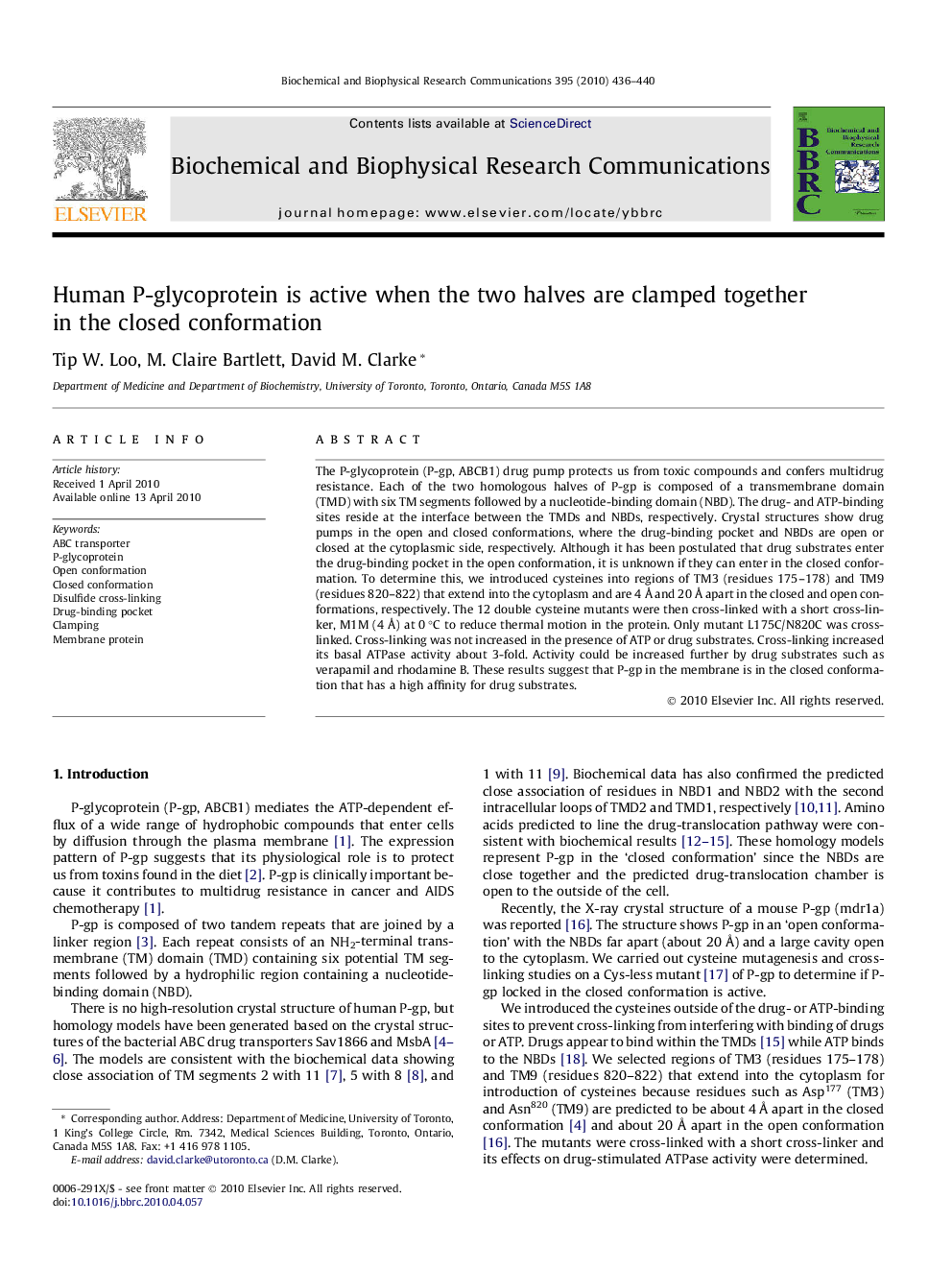| کد مقاله | کد نشریه | سال انتشار | مقاله انگلیسی | نسخه تمام متن |
|---|---|---|---|---|
| 1931864 | 1050566 | 2010 | 5 صفحه PDF | دانلود رایگان |

The P-glycoprotein (P-gp, ABCB1) drug pump protects us from toxic compounds and confers multidrug resistance. Each of the two homologous halves of P-gp is composed of a transmembrane domain (TMD) with six TM segments followed by a nucleotide-binding domain (NBD). The drug- and ATP-binding sites reside at the interface between the TMDs and NBDs, respectively. Crystal structures show drug pumps in the open and closed conformations, where the drug-binding pocket and NBDs are open or closed at the cytoplasmic side, respectively. Although it has been postulated that drug substrates enter the drug-binding pocket in the open conformation, it is unknown if they can enter in the closed conformation. To determine this, we introduced cysteines into regions of TM3 (residues 175–178) and TM9 (residues 820–822) that extend into the cytoplasm and are 4 Å and 20 Å apart in the closed and open conformations, respectively. The 12 double cysteine mutants were then cross-linked with a short cross-linker, M1M (4 Å) at 0 °C to reduce thermal motion in the protein. Only mutant L175C/N820C was cross-linked. Cross-linking was not increased in the presence of ATP or drug substrates. Cross-linking increased its basal ATPase activity about 3-fold. Activity could be increased further by drug substrates such as verapamil and rhodamine B. These results suggest that P-gp in the membrane is in the closed conformation that has a high affinity for drug substrates.
Journal: Biochemical and Biophysical Research Communications - Volume 395, Issue 3, 7 May 2010, Pages 436–440